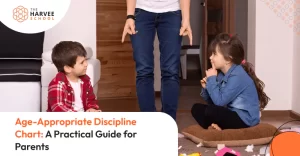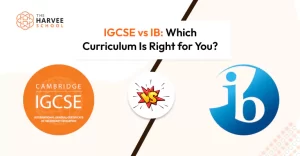How to Teach Kids to Read: A Step-by-Step Guide
Reading is a core skill that lays the foundation for lifelong learning, creative thinking, and self-assurance. Teaching kids to read is one of the most rewarding experiences a parent or educator can have.
But if you’re wondering how to teach kids to read, the process might seem overwhelming. Don’t worry — with the right strategies and a little patience, you can help your child become a strong, enthusiastic reader.
In this guide, we’ll explore effective, research-backed ways to teach children to read, from building phonemic awareness to developing comprehension. Whether you’re homeschooling, teaching in a classroom, or helping your child at home, these tips will guide you every step of the way.
Why Early Reading Skills Matter?
Reading early improves brain development, vocabulary, attention span, and emotional intelligence. Children who learn to read before age seven are more likely to perform better academically. It also encourages better communication skills and fosters a love for learning that can last a lifetime.
Start with Phonemic Awareness
Phonemic awareness means being able to hear and play with the sounds in words — like knowing that “cat” is made up of the sounds /k/, /a/, and /t/.
It’s the first step in teaching kids to read.
Activities to Build Phonemic Awareness:
Rhyming games: “What rhymes with cat?”
Sound matching: Ask your child, “Which of these words starts with the same sound as ‘ball’? Is it ‘dog,’ ‘book,’ or ‘cat’?”
Clapping syllables: Break words like “apple” into “ap-ple” and clap for each sound.
Tip: Make it playful and fun. Use songs, nursery rhymes, and poems to help children hear and remember different sounds — the rhythm and repetition make learning fun and effective.
Introduce Phonics Systematically
Phonics involves connecting sounds (phonemes) to letters (graphemes). Teaching phonics helps kids decode words.
How to Teach Phonics:
- Start with simple letter-sound relationships: /a/, /b/, /c/, etc.
- Use phonics-based books and flashcards.
- Play word-building games like “What happens when we replace the ‘m’ in ‘mat’ with ‘c’?”
Tip: Stick to a consistent phonics program. Repetition and practice are key to building decoding skills.
Teach Sight Words for Fluency
Sight words are everyday words that kids need to recognize instantly because they don’t always sound the way they’re spelled, like “the,” “was,” or “said.” Learning them improves reading speed and fluency.
Sight Word Strategies:
- Use flashcards daily.
- Create a “word wall” at home.
- Play sight word bingo or memory games.
Tip: Introduce a few sight words each week and review them regularly.
Read Aloud Daily
Reading aloud exposes kids to new vocabulary, sentence structures, and storytelling techniques.
Benefits of Reading Aloud:
- Improves listening skills and comprehension.
- Encourages questions and discussions.
- Builds a strong reader-child bond.
Tip: Use expressive voices and gestures. Choosing books that match your child’s passions—whether it’s dinosaurs, fairy tales, or space—and suit their reading level can make reading feel exciting rather than overwhelming.
Encourage Storytelling and Discussion
A good reader isn’t just someone who can decode words — they understand what they read. That’s where comprehension comes in.
Improve Comprehension Through:
- After reading a story together, ask your child, “Why do you think the character did that?”
- Summarizing the story together.
- Predicting what will happen next.
Tip: Let children retell the story in their own words. It helps them process and understand the content.
Use Reading Apps and Games
Technology can be a powerful tool in teaching kids to read, as long as it’s used mindfully.
Educational Apps offer interactive lessons, games, and leveled books designed to make reading fun and educational.
Tip: Limit screen time and use apps as a supplement to real books and activities.
Create a Print-Rich Environment
Kids learn better when they’re surrounded by words. A print-rich environment helps reinforce reading concepts naturally.
Ways to Create It:
- Label items around the house (e.g., “chair,” “door”).
- Hang up the alphabet and word charts.
- Keep books accessible in every room.
Tip: Rotate books regularly to keep your child interested and curious.
Be Patient and Celebrate Progress
Every child learns at their own pace. Some might read fluently by age five, while others may need more time. The key is consistency and encouragement.
What You Can Do:
- Celebrate small wins — finishing a book, learning a new word.
- Avoid comparisons with other kids.
- Read together without pressure.
Tip: Let reading be a joy, not a chore. The more positive the experience, the more your child will want to read.
Combine Reading with Writing
Reading and writing go hand in hand. As kids begin recognizing words, encourage them to write their own.
Activities That Help:
- Keep a reading journal.
- Write short stories or sentences using new vocabulary.
- Trace letters and words for better recall.
Tip: Let kids make their own mini-books. It’s a fun way to reinforce learning.
Model Good Reading Habits
Children learn by example. If they see you reading regularly, they’re more likely to develop an interest themselves.
How to Model Reading:
- Read newspapers, books, or recipes in front of them.
- Visit libraries and bookstores together.
- Share your favorite childhood books.
Tip: Make reading part of your daily routine — bedtime stories, weekend book clubs, or quiet reading time.
Final Thoughts
Learning how to teach kids to read doesn’t require expensive tools or formal training, it just needs patience, structure, and lots of encouragement. By combining phonics, sight words, comprehension, and fun, you can guide your child through one of the most important milestones in life.
So take it step by step, celebrate every success, and most importantly — make reading a fun adventure your child will cherish forever.






